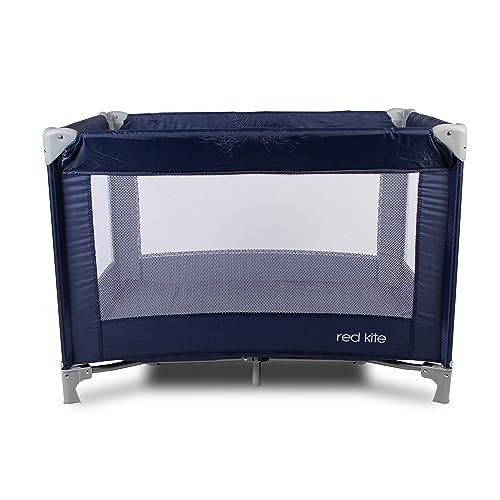What Will Tots And Cots Be Like In 100 Years?
페이지 정보
작성자 Gayle 작성일25-09-06 15:52 조회2회 댓글0건관련링크
본문

Tots and Cots: A Comprehensive Guide for Parents
When it comes to guaranteeing a safe and comfy sleeping environment for babies and young children, the choices moms and dads make-- ranging from cribs to cots-- can considerably impact their wellness. Today's short article dives deep into the intricacies of choosing the best cot beds sleeping arrangements for tots, highlighting security, design, functionality, and how these options evolve as a kid grows.
Understanding Tots and Cots
Tots normally describe young kids, particularly young children aged in between 1 to 3 years, while cots are the sleeping plans particularly developed for infants and young children. The appropriate sleeping devices for this age group consists of different types of nursery cots, cribs, and young child beds.
Kinds of Cots
Various designs exist to meet the diverse requirements of both parents and kids. Below is a list describing the most typical types of cots offered:
Standard Crib
- A standard crib is created for babies and typically includes sides that can be adapted to different heights.
Convertible Crib
- This type of crib can convert into a toddler bed, daybed, or full-sized bed as the child grows, making it a long-lasting investment.
Portable Crib
- Also referred to as travel cots, these are lightweight and quickly collapsible, ideal for traveling or smaller sized home.
Co-Sleeper
- A co-sleeper crib connects to the side of the moms and dads' bed, permitting easy gain access to while making sure the baby has a different and safe sleeping area.
Toddler Bed
- A toddler bed is a small bed that resembles a standard bed but is developed specifically for toddlers, normally including safety rails.
Mini Crib
- Mini cribs are smaller sized than standard cribs, making them a fantastic alternative for tight areas, however they are ideal for infants only.
Safety Considerations
Making sure security is vital when picking a cot for a kid. Here are critical security guidelines parents must think about:
- Check for CPSC Certification: Ensure that the cot sticks to the Consumer Product Safety Commission (CPSC) requirements.
- Prevent Drop-Sides: cots to tots with drop-sides have actually been connected to security hazards, and the newest security guidelines prohibit them.
- Use a Firm Mattress: A firm mattress decreases the threat of suffocation and need to fit comfortably within the cot.
- Keep Bedding Simple: Use a fitted sheet and avoid pillows, comforters, and stuffed animals that can present suffocation threats.
- Follow Weight and Age Guidelines: Ensure the kid has not surpassed the cot's weight limitation and is still within the suggested age.
Transitioning from a Cot to a Toddler Bed
The shift from a cot to a young child bed can be an emotional milestone for both moms and dads and kids. Here are steps to relieve the transition:
Timing
Choosing when to transition can be subjective, but it's usually suggested to make the switch between 18 months and 3 years, based on elements like:
- Physical Ability: If the child is climbing out of the cot.
- Potty Training: Consider transitioning if the child is bathroom training and needs much easier gain access to.
- Behavior: Exhibiting indications of maturity, such as following instructions or revealing a desire for independence.
Tips for Making the Transition Smooth
Involve Your Child: Let the kid pick their new bed linen or bed decor to instill enjoyment about the change.
Keep Routine Consistent: Maintain the child's bedtime regimen to provide convenience throughout this period of change.
Explain the Change: Discuss the shift to a young child bed positively, making it seem like a fantastic experience.
Security Measures: Place the bed against the wall or use bed rails to prevent falling during sleep.

Picking the Right Bed
When choosing a young child bed, parents need to consider aspects like:
- Height: Low-profile beds are ideal for young children who may fall out throughout sleep.
- Durability: Ensure the bed can withstand active play along with sleep.
- Design and style: Choose a design that complements the kid's room and is appealing to the kid.
Selecting the ideal cot for your youngster can be an overwhelming procedure, however comprehending the choices offered, essential safety factors to consider, and the best cot bed timing for transitioning to a toddler bed can make this journey simpler for moms and dads. Investing effort and time into these decisions will make sure that your child has a safe, comfy, and nurturing sleep training For babies environment.
FAQs
1. What is the distinction between a cot and a crib?
- A cot is normally a smaller sized bed developed for younger toddlers, while a crib is a larger bed that is generally ideal for babies as much as 3 years of ages.
2. When should I move my child from a crib to a toddler bed?
- The transition time is generally between 18 months and 3 years; this change is based upon the kid's physical abilities and behavioral indications.
3. How can I guarantee my kid is safe while sleeping?
- Always follow safety standards, use a firm bed mattress with an easy bed linen plan, and monitor the cot's weight limit.
4. What should I do if my child tries to climb out of the cot?
- If your child is climbing out, it may be time to consider transitioning to a young child bed to prevent falls.
5. Can I use the same mattress when transitioning?
- Usually, it is best to replace the crib mattress with one that is specific to the toddler bed. Guarantee it fits snugly and abides by security standards.
By thinking about these aspects, parents can model healthy sleep routines and offer their children with a safe environment that promotes relaxing sleep. Buying quality sleeping plans will contribute to the kid's general development and happiness.
댓글목록
등록된 댓글이 없습니다.

